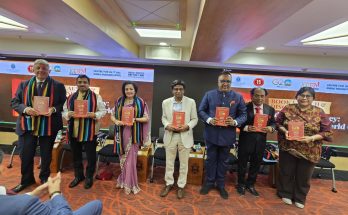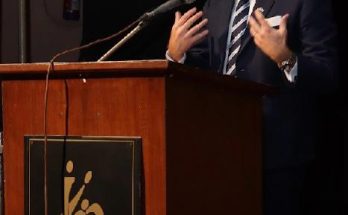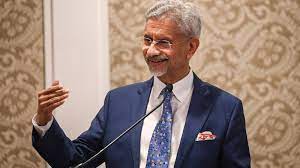 In politics, it’s necessary to sift myths from realities. Undoubtedly, the Bharatiya Janata Party’s spectacular victory in Assam assembly elections has helped the cadres and leaders to forget its losses in Delhi and Bihar in 2015, but a close look at its performance in Kerala, Assam and West Bengal along with Puducherry presents another picture.
In politics, it’s necessary to sift myths from realities. Undoubtedly, the Bharatiya Janata Party’s spectacular victory in Assam assembly elections has helped the cadres and leaders to forget its losses in Delhi and Bihar in 2015, but a close look at its performance in Kerala, Assam and West Bengal along with Puducherry presents another picture.
Assam victory has helped the BJP leaders and cadres to come out of the spectre of its defeat in Delhi and Bihar last year. It will go with a renewed vigour and determination in the next year’s assembly elections whose electoral outcome will determine the course of national politics to the general elections in 2019.
The electoral outcome of the five electoral contests is not going to either make or mar the prospects of the BJP getting a second term in 2019 as the party’s victory is reduced to a state which sends 14 MPs to the Lok Sabha while next year elections will matter more.
Assam, Kerala, Puducherry, Tamil Nadu and West Bengal, which sends 116 MPs to the Lok Sabha, only 11 NDA MPs were elected to the lower house in 2014 while in 2017 when assembly elections will be held in Goa, Punjab, Manipur, Uttar Pradesh and Uttarakhand then they will cover102 Lok Sabha seats where the NDA’s strength was 86 in 2014 general elections.
Statistics crunching
But a close look at the numbers and statistics of the electoral performance of the political parties contradicts the broad media narrative that the Congress or the Left are on deathbed and national politics is again turning unipolar because the BJP has arrived on the national scene. Yes, The BJP has expanded its electoral base a bit in areas where it was either very weak or was non-existent but whether this expansion will help it in 2019 seems doubtful.
Before we proceed, it would be correct if we present a wholesome picture of all the five assembly elections. There were 824 assembly seats at stake in four states and one Union Territory. The BJP has won 64 seats in all the five while the Congress has managed to retain 115 seats. The Left, which continues to be a much diminished national party, has won 124 seats in Kerala and West Bengal. Rest 540 seats have gone to regional parties.
At the same time, the BJP had contested at 696 seats and the Left had fielded its candidates in 452 assembly seats while the Congress was fighting at 363 seats. Thus the strike rate of the Congress stands at 31.6 per cent and the BJP’s strike rate is 9.1 per cent which is the poorest of the three national parties. The Left’s strike rate stood at 27.4 per cent.
At the same time, by losing power in Assam and Kerala, the Congress has failed to arrest its downward journey but it must also be added that the grand old party (GOP) was suffering from anti-incumbency factor in these two states. A small consolation has come to the Congress way when it wrested power in Union Territory of Puducherry from AINRC.
Regional forces on upswing
Message from the election is straight that national parties are facing a serious challenge from regional forces and the BJP should harbour no illusion that it is above this threat.
The BJP’s poll percentage, compared to its performance in the 204 Lok Sabha elections, has come down in most of the states barring Kerala where it has marginally improved. In West Bengal it came down from 18 per cent to 10.2 per cent. In Assam, the BJP’s vote share in Assembly election stands at 29.5 per cent while in the 2014 Lok Sabha polls it had polled 36.50 per cent votes.
The RashtriyaSwyamsevakSangh (RSS), as always, played a significant role in just held assembly elections. First, the RSS cadres work on a long term basis developing areas for the growth of the Hinduatva ideology and thought which in long term helps the BJP to grow politically. Secondly, at the time of elections, the RSS sends extra cadres for election management purposes while the old cadres who know the area well having worked in that area for months and years guide the party and its candidates.
The RSS influence over the BJP after the coming to power in 2014 has grown and is constantly growing. It may appear that its old issues like the Ram Janmabhoomi temple at Ayodhya, Muslim Personnel Law, abrogation of Article 370 or a nation-wide ban on cow slaughter are on the back burner but in reality they are not.
The RSS’s most favourite project which lies at the core of its ideology and conviction is being already pursued vigorously by the NDA government. The RSS’s target has always been school books and education system as it has always wanted to purge it of what it calls Left and secular values and orientation. Human Resource Development Minister SmritiIrani has been working in close consultation with RSS ideologues and has been appointing RSS backed academics and experts to top academic institutions like the universities.
As a matter of fact new issues like the aggressive nationalism, rewriting of history or removing alleged wrong facts from school books, insistence on slogans like Bharat Mata ki Jai have been added to the agenda. Love Jihad, beef bans or enforcement of moral code of dress for women are some examples of the RSS agenda .Rising intolerance towards the other view or other opinion are sharpening social and communal conflicts.
The RSS influence has grown in the last two years and the government will not do anything or will not make any policy change without its overt or covert approval. The RSS is supreme and there is no BJP leader today who can question or challenge the supreme organisation.
Election results have further consolidated the hold of Prime Minister Narendra Modi and BJP president Amit Shah Duo on the party and has silenced critics who had begun to raise their heads after the party’s defeat in Delhi and Bihar assembly elections in 2015.
Question whether Hindu nationalist issues will replace economic agenda in the BJP’s electoral strategy in coming months leading to assembly elections in 2017 cannot be answered in yes or no. It would depend upon as how the country’s economy fares in coming months. If prices stabilise, job are created and there is a feel good factor, then the BJP will go in for economic issues otherwise it would try to win election with an emotional issues.
Elections in UP, Uttarakhand and Punjab are very crucial for the RSS controlled BJP and therefore nothing will be left to chance to ensure a win. Sharpening communal divide for polarising Hindu votes is surely a weapon whose deployment cannot be ruled out in coming weeks and months.
What it means for Congress
Loss of power in Assam and Kerala is a setback to the Congress but there seems to be no major challenge to Rahul Gandhi’s leadership. The Congress cannot survive without the leadership of Nehru-Gandhis. If the family takes a back seat and leaves rudders of the party to other leaders then the Congress will undergo multi splits and the country would have many parties.
Rahul Gandhi’s role in the party is going to incrementally increased in coming months. Neither Rahul nor Priyanka are going to be CM’s face in UP elections though their role and presence in the state is likely to go up.
The Congress will face resource crunch in coming months as donations to the party are bound to come down but the party will do its best to dig resources from its reserves to make a pitch for UP, Uttarakhand and Punjab. However, it would have no problem in finding candidates for assembly elections.
Chief Ministers of West Bengal and Tamil Nadu Mamata Banerjee and Jayalaltihaa will help the Modi government to push some of the bills through the Rajya Sabha but dealing with highly unpredictable and mercurial temperament of the two lady chief ministers is not going to entirely smooth. It would require not only a deft handling in the spirit of give and take.
(The author is a Senior Fellow at the ORF. The views expressed in this column are solely those of the author.)
Author Profile
- India Writes Network (www.indiawrites.org) is an emerging think tank and a media-publishing company focused on international affairs & the India Story. Centre for Global India Insights is the research arm of India Writes Network. To subscribe to India and the World, write to editor@indiawrites.org. A venture of TGII Media Private Limited, a leading media, publishing and consultancy company, IWN has carved a niche for balanced and exhaustive reporting and analysis of international affairs. Eminent personalities, politicians, diplomats, authors, strategy gurus and news-makers have contributed to India Writes Network, as also “India and the World,” a magazine focused on global affairs.
Latest entries
 DiplomacyApril 23, 2024Resetting West Asia, re-booting the world, but not fast enough: T.S. Tirumurti
DiplomacyApril 23, 2024Resetting West Asia, re-booting the world, but not fast enough: T.S. Tirumurti India and the WorldApril 22, 2024India’s G20 Legacy: Mainstreaming Africa, Global South in global agenda
India and the WorldApril 22, 2024India’s G20 Legacy: Mainstreaming Africa, Global South in global agenda DiplomacyApril 10, 2024Diplomat-author Lakshmi Puri pitches for women power at LSR
DiplomacyApril 10, 2024Diplomat-author Lakshmi Puri pitches for women power at LSR India and the WorldApril 6, 2024UN envoy pitches to take India’s solutions to the world stage
India and the WorldApril 6, 2024UN envoy pitches to take India’s solutions to the world stage







